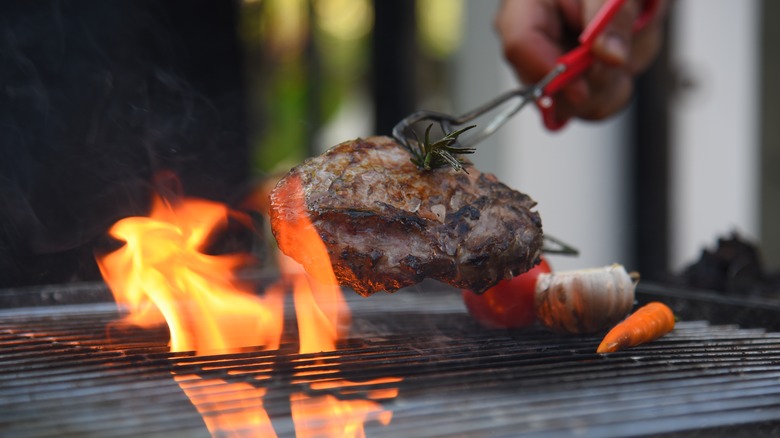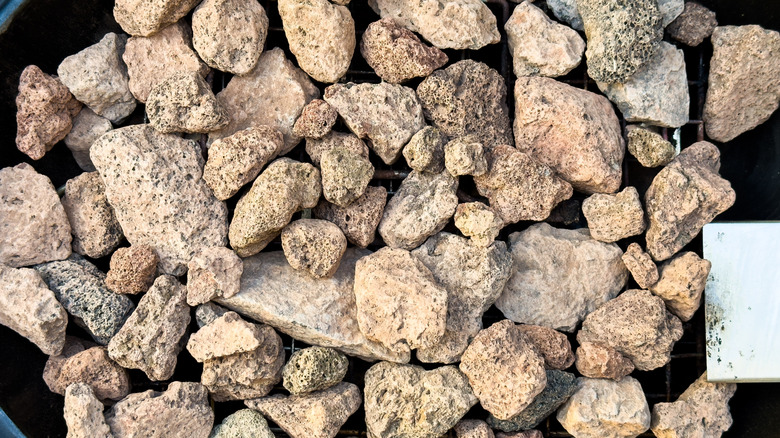Old-School BBQ Lovers Know This Simple Hack Makes Gas Grilling Better
Whether you want to grill burgers like a pro, get that perfect finish on a whole salmon, or are just looking to char up some veggies, there's an old-school gas grilling trick that can make your life a whole lot easier. Brian Gunterman, CEO and founder of DDR BBQ Supply, spoke to Food Republic and told us that lava rocks, the once necessary and now helpful tool, still have a place for dedicated barbecuers everywhere.
"Lava rocks turn gas grills into radiant heat powerhouses, absorbing and releasing energy like a ceramic kamado," Gunterman explained. Improvements in gas grill efficiency, heat distribution, and maintenance may have phased out lava rocks for standard models, but they still have a place in outdoor grilling. In the same way they can help you make artisan bread at home, lava rocks are great at giving you even, prolonged heat distribution on the grill while also drastically reducing your risk of flare-ups. Plus, Gunterman said that they hang onto moisture from dripping fat and juices, creating a moister environment than relying on heating elements alone.
Simply place the rocks on a rack between your element and grill grate, leaving enough room for airflow, Gunterman said, and you've got a perfect setup for enhancing your barbecue season. There is a small learning curve when adjusting to gas and rocks rather than just gas, but for the results you get, lava rocks are an easy, affordable choice when looking to upgrade your grill.
How to use and maintain a lava rock gas grill
Maintaining a gas grill with lava rocks doesn't require a lot of time, tools, or talent, so don't feel intimidated by the idea of tweaking your appliance. Provided you follow a few basic safety measures, actually using and maintaining your new system is a breeze.
"Cold rocks on high can explode in big pieces when you throw them on the grill early in the morning," Brian Gunterman warned. "You need to preheat them slowly." Let your rocks come to your desired temperature over the course of 10 or 15 minutes, so they don't succumb to thermal shock and start resembling hand grenades. If you grill in cold weather, take the process extra slow to be 100% safe. Also, Gunterman explained that the stubborn layer of ash on old rocks is actually old grease, so you should swap them out once they change color to avoid accidentally starting an outdoor grease fire.
"Rotate your rocks every quarter, as in seasons[;] also move the outside rocks into the middle where the most heat is," said Gunterman. He suggested replacing your rocks every 40 to 50 cooks or so, though it can depend on what exactly you grill. If you're a burger-loving cook, you may need to swap them out more frequently than someone who loves grilled mushroom caps or some mixed veggies. If you want, you can even soak them in a one-part bleach and nine parts water solution and repurpose them as garden decoration!


